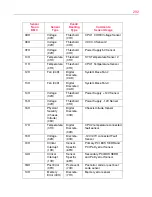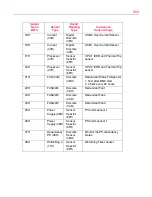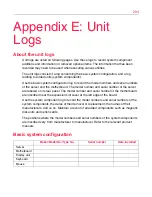
306
binary:
The base-two number system, in which the only digits are 0 and 1. This system is
used in computers since it can be implemented as a series of electronic
signals that are either off (0) or on (1). From right to left, the digits in a binary
number have the values 1 2 4 8 16 and so on. For example, the binary
number 101 is equivalent to the decimal number 5. If you need to convert
numbers from binary to decimal or vice versa, many pocket calculators and
calculation programs can do the work for you. See also
decimal
.
bit:
A binary digit. The basic unit of information used by the computer, a bit may be either
1 or 0. While an individual bit cannot contain a significant amount of
information, by combining bits into larger units, such as bytes (a group of eight
connected bits), your computer can deal with huge blocks of data. See also
byte
.
bitmap:
A graphic composed of dots or pixels. It is usually created by a drawing package,
a screen capture utility or a scanner.
bits per second (BPS):
A way of measuring the speed at which information is passed
between two devices. This is the basic measure used in modem
communications. This is similar, but not identical, to the baud rate. See also
baud
.
board:
Short for printed circuit board. A thin card containing chips and other electronic
components connected by metallic lines etched into the surface. Most of the
basic components of a computer, such as the BIOS and memory are
contained on one board, called the motherboard. A computer may contain
additional boards, called daughterboards, that provide specific functions
beyond those on the motherboard.
boot:
To start the computer. There are two types of boot. Turning on the power is called a
cold boot. Restarting the computer by pressing
Ctrl
+
Alt
+
Del
or the restart
button is called a warm boot. The term boot originates from bootstrap program
(as in pulling itself up by its bootstraps), a program that loads and initializes the
operating system.
Summary of Contents for Magnia 3310
Page 1: ......
















































